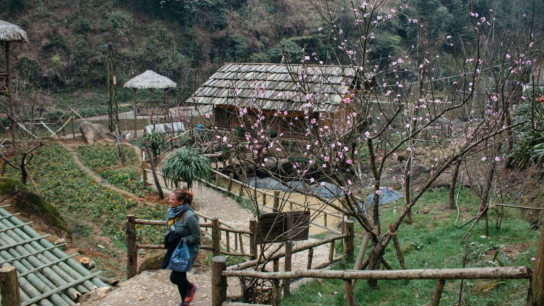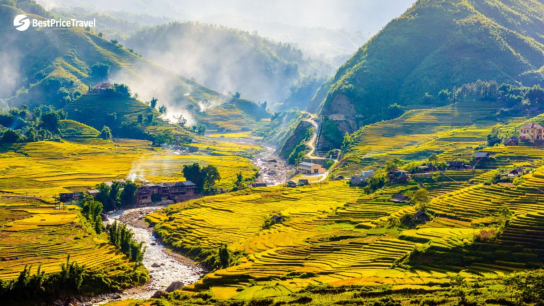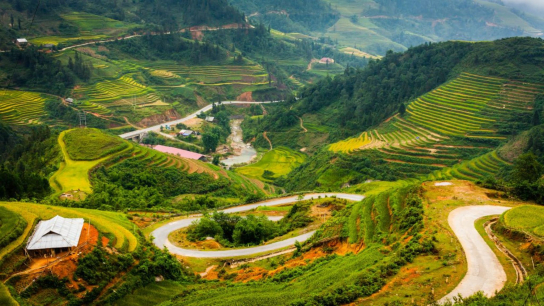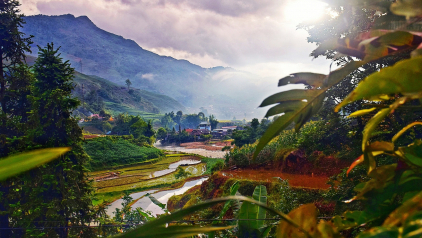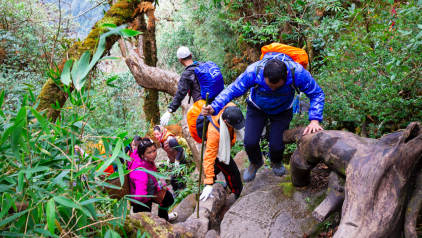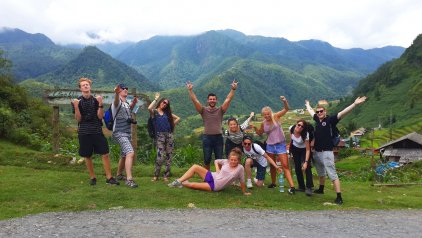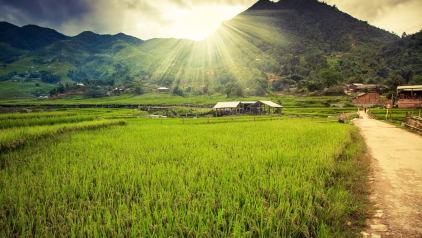A Completed Guide For The Best Trekking Experience in Sapa
Trekking has long been a popular kind of tourism activity. In Vietnam, trekking is more and more developed for the nature lover and would like to have experiences on their feet. Hence, the terrain and climate in Sapa are particularly suitable for those who want to travel combining with exercising.
Coming to Sapa, you cannot ignore visiting the village by trekking in order to explore nature as well as the majestic beauty of the green fields, mountains, and waterfalls. You can also combine with overnight at homestay. Go trekking is a type of exploring and discover the unique culture of ethnic minorities so to have more fun for your trekking trip, you should find out about the village, customs, things to do and not to do when visiting those villages. Besides that, you also have to study the maps and terrain area to make a plan that suitable for your health and prevent dangerous situations.
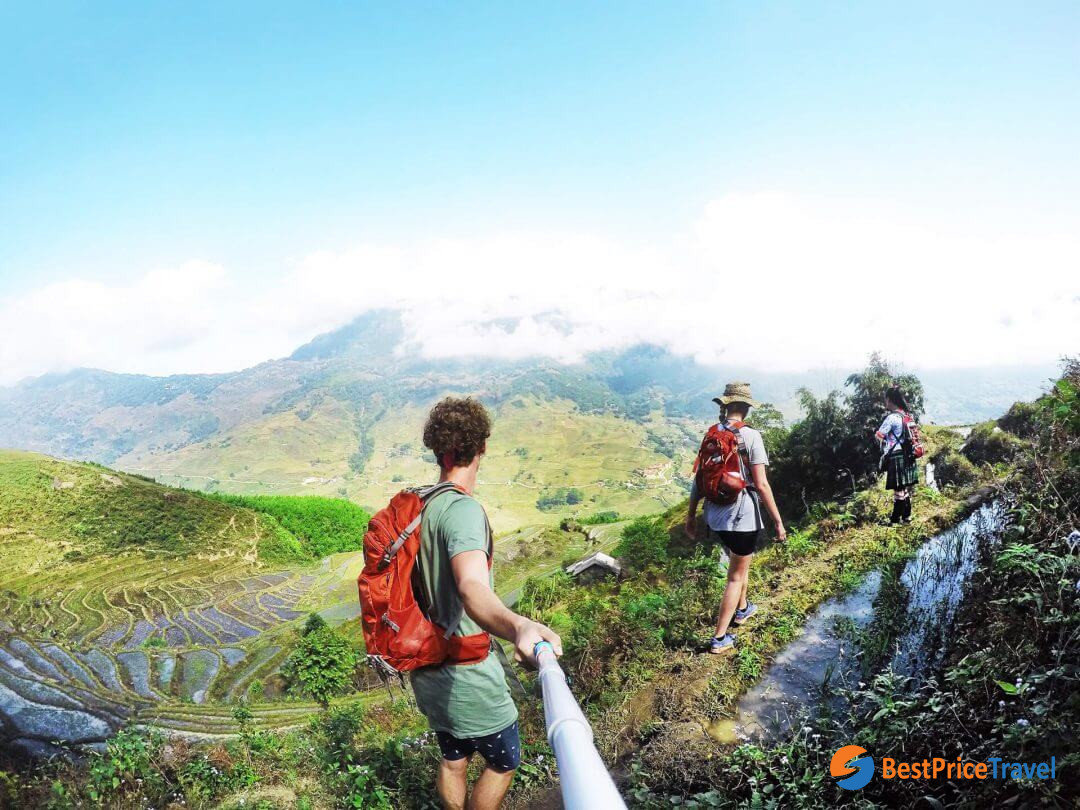
Trekking in Sapa
If you have a plan for the first trekking trip in Sapa, surely that you will wonder about what you have to prepare for your trip and we would like to share some information as well as experiences to go trekking.
Overview of Sapa trekking
Trekking in Sapa, you will have a chance to explore the majestic beauty of the green fields, mountains, waterfalls…and discover the unique culture of ethnic minorities. Most of the visitors to Sapa need to spend at least 2 days exploring Sapa. They can either spend 2 days trekking or one day for trekking, the other for a free day, or taking the cable car to Fansipan peak. The normal trek is about 12 km per day. If you find it hard, you can choose a shorter trekking route or use a car or motorbike to get back to Sapa town.
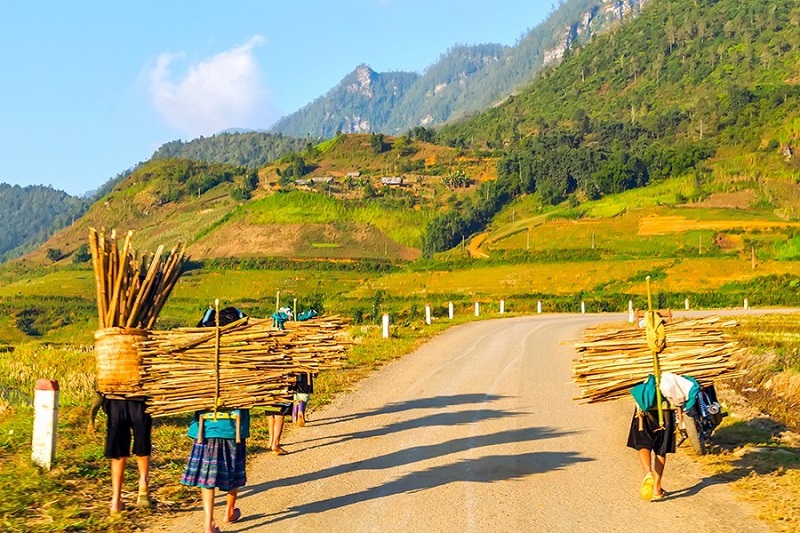
Trekking in Sapa
Some people choose to book all the services separately and book a tour guide when they arrive. This is cheaper than booking a package tour, however, you may need some luck to have a good tour guide. It is best to book a package tour which includes a tour guide, transfer from and to Hanoi, accommodation, and some meals.
You can choose to stay at a homestay, it is a great chance for you to learn more about the traditions and customs of the Sapa people. Please note that homestay is basic, so think of it before choosing to stay at a homestay in Sapa.
The best trekking trails in Sapa
Cat Cat - Sin Chai
This trail is more country stroll than a hike, it is only 30 minutes walk from Sapa town, Cat Cat Village is the closest and the most popular destination. While the village sees plenty of travelers, the walk is beautiful - especially in the early morning or on a clear late summer afternoon. It's a good way to start a Sapa journey.
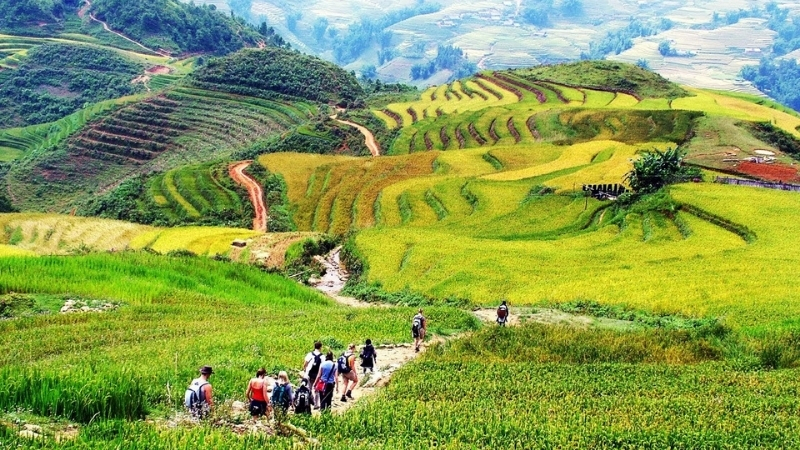
Trekking to Sin Chai Village
Coming here, you will be impressed by the wonderful waterfall at the entrance of the village, the giant water wheels. Further along for about 4km, the walks around Sin Chai are usually quiet, less busy, and even more beautiful. You will have a pleasant surprise at how delightful the area was around Sin Chai village – despite other developments in Sapa.
Y Linh Ho - Lao Chai - Ta Van
Follow this route, we start trekking through Muong Hoa valley to Y Linh Ho village, home to Black Hmong minorities. This is an easy and moderate trail and still offers you a wonderful view of this region. The hike initially follows a mountain road that leads out of Sapa, then a descent into a deep valley crosses the Ta Van River, winds through rice paddies, and the spreads-out home of Lao Chai and Ta Van villages.
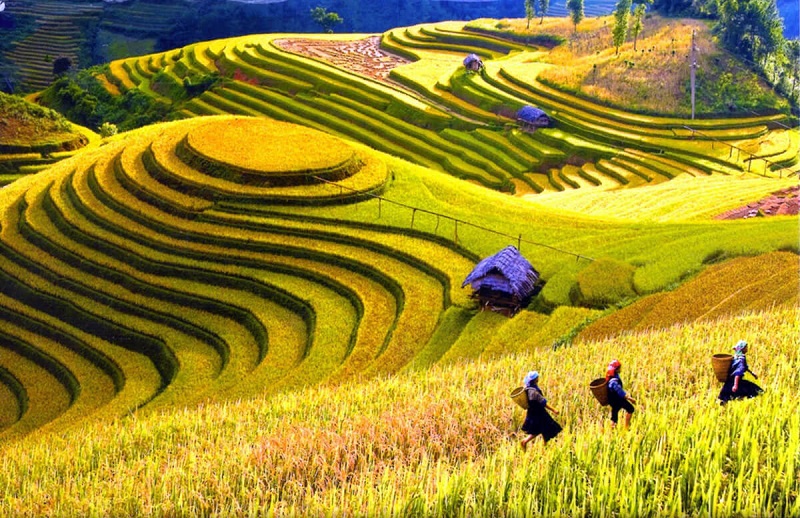
Trekking through rie terraces
From the road, you will get an absolutely stunning view of the mountains across the river valley as well as the villages nestled down in the valley itself for the entire length of the trek. The trek between Lao Chai to Ta Van is a particularly picturesque walk and less commercialized than the trek to Cat Cat. Eventually, the trail crosses back over the river and rejoins the road.
Ta Phin - Silver Waterfall - Tram Ton
This trail is easier to get as you can come here by car or bike and the view will be more of a combination with hill tribe village and nature’s wonder. Ta Phin Village is about 17 km northeast of Sa Pa town center. The road to Ta Phin village is extremely beautiful, with the mountain sloping side of the green terraced fields, many flowers blooming along two sides. The village is home to ethnic minorities, including two Red Dao and Hmong ethnic groups.
Things to do in Ta Phin are buying specialties from local people (shirts, brocade bags, backpacks, wallets, towels, robes in the pattern of flowers, plants, birds...or silver jewelry such as bracelets, rings, or necklaces), bathing with medicated leaves & herbs and visiting Ta Phin Cave
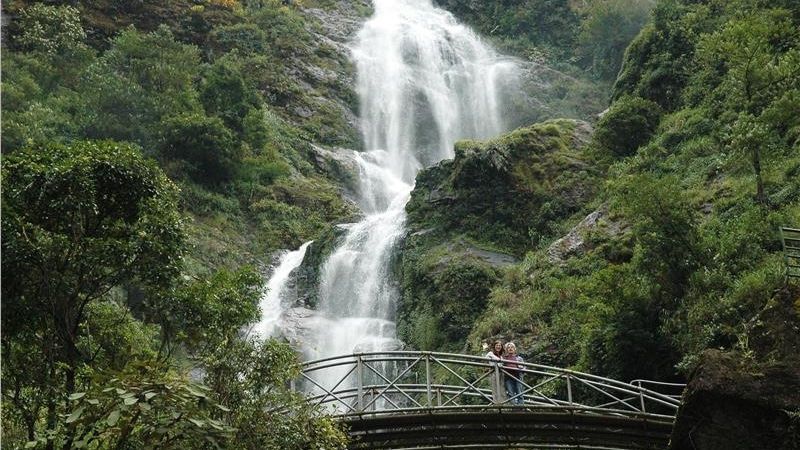
Silver Waterfall
Silver Waterfall is popular among hikers which you can see from the main road, locates 11km from Sapa town. It is a compulsory stop for local tour groups and can be pretty busy. The falls are beautiful but probably only warrant a visit if time permits and in conjunction with a visit to Tram Ton Pass 3kms further along the road. Tram Ton Pass is Vietnam’s highest mountain pass located 18km North of Sapa On a clear day, the views are spectacular.
Don’t be deterred by mist in Sapa. Conditions on the pass are frequently different from those in town. The temperature can also rise quite a bit on the pass as you break away from the cooler air of Sapa.
The best time to enjoy trekking in Sapa
There are two periods that are considered to be the best time to go trekking in Sapa are March to May and September to November. During this time, the weather is stable with sunny days and cool nights.
In March and early April, the weather is still a bit cold but the sky is clear and blue. In May and June, there are some slight rains that filled the rice terraces with water. With beautiful sunshine, the rice terraces are sparkling mirrors reflecting the cloudy blue sky. There are plenty of clouds, sunshine and the weather is calm though a little bit hot during the day.
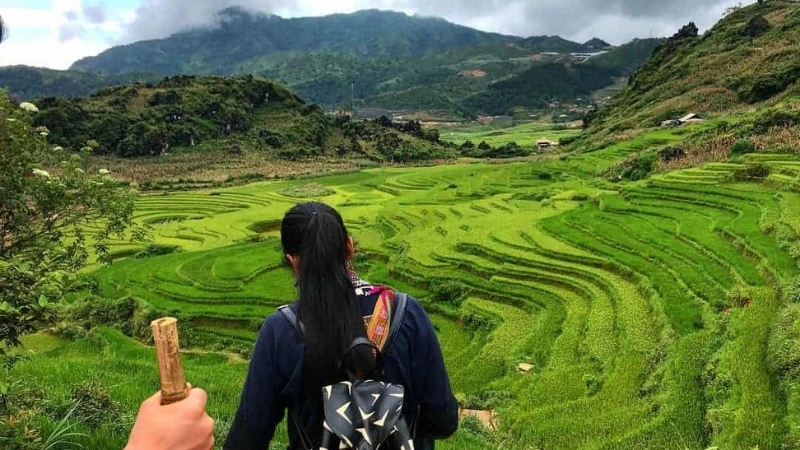
Trekking through the lush rice paddies in Spring
In September, you can enjoy the cool breeze, a little less rain, and a chance to see a beautiful transformation of nature – green terraces fields turn to golden. In October and November, the weather is cooler and foggier yet when the sun comes up; it shines through the clouds and lights up the mountain range, and offers you a magnificent view of this area.
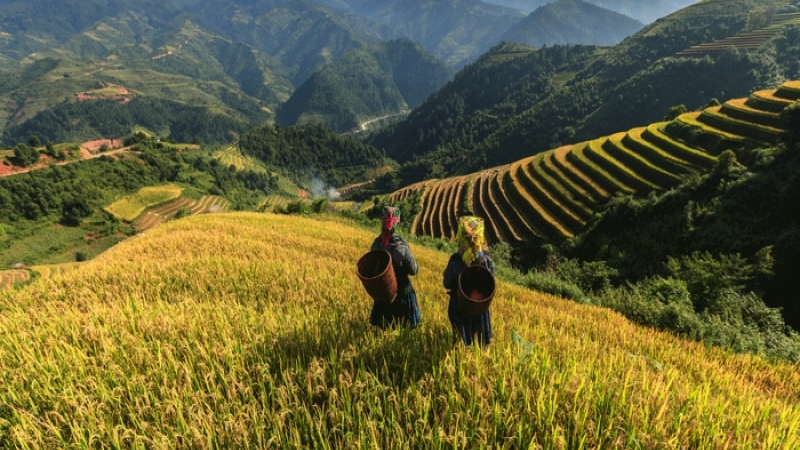
Sapa during rice harvest season
The rainy season of the North is ranging from June to August and the peak time is July and August and it goes along with the weather in Sapa. The rains often appear with storm create flood season which not only affects your trekking in Sapa but also bring potentially high-risk situation.
During December to February, the weather is very cold, and gloomy, also dense fog makes the visibility lower. The temperature is always below 10 degrees C, sometimes it can drop to below 0 degrees C, and you might experience snowfall in Sapa.
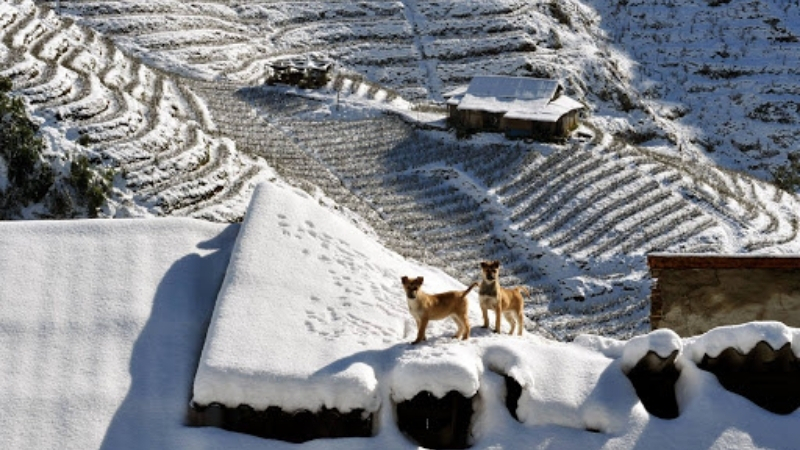
Sapa during winter time
What to pack for trekking in Sapa
Clothes and shoes
To enjoy the trip and having the best experience in Sapa, tourists are advised to be well-prepared before setting off. The average temperature in Sapa is much lower than in other regions in Vietnam, and the mountainous terrain may require specialized tools. When joining a trekking trip in Sapa, there will be more things you need to have inside your luggage: drinking water, raincoat, windbreaker, good trekking shoes or rubber boots, a walking pole, insect repellant, flashlight.

Trekking shoes
Medicines
Maybe you will be faced with the weather different from your country, so it is better to bring some medicines for cold, fever, diarrhea, antipyretic, antibiotics, etc. Because you go trekking so you should bring bandages, red medicines in case of injuring.
Backpacks
During your journey, you have to bring your luggage by yourself, so a medium backpack is the best choice for choosing to contain your belonging. It should also have a belt to tighten and its strap is soft to feel smooth and relax for the whole journey.

Backpacks with belts
Foods and drinks
Trekking journey makes you be consumed a lot of energy and sweat a lot so you need to prepare enough foods and drinks to supplement when needed. Some foods should be carried such as bread, snacks, sausages, canned foods…. and water.
Some notes for trekking in Sapa
When visiting some villages in Sapa, such as Lao Chai - Ta Van, Cat Cat - Y Linh Ho, Ta Phin ... where inhabited by Black H'mong, Dzao, you absolutely do not sit in the middle of the house or middle room. If you visit their homes, you have to visit follow the direction of the owner.
The first chair is for parents (if their parents have passed away, no one is allowed to sit on it). When you see the Black Hmong or Red Dzao is doing a magic ritual or exorcism, you have to attend without their allowance because they do not want to allow a strange person to attend. When doing the ritual, a beam of green leaf usually be hung on the tall pillar which is put at the solemn place in order to everyone can see to avoid attending.
When you see kids in the village, you absolutely do not touch or kiss on their head because everyone in here assumes that action would make the kids be frightened and abled to illness.

Kids in Sapa
If you see a nice and clean place, remember do not immediately take a rest and eat there because probably it is the place of common worship of that whole village and very sacred for them. Whistling when visiting is taboo because they said that sound will call the devil to come to their village.
The house of ethnic people also often divided into many rooms and the middle room is the place of worship and the guest are not allowed to sit there. The biggest and tallest pillar in the house is considered as where the ghosts living and you should not hang your clothes, sit and set your back to that pillar.
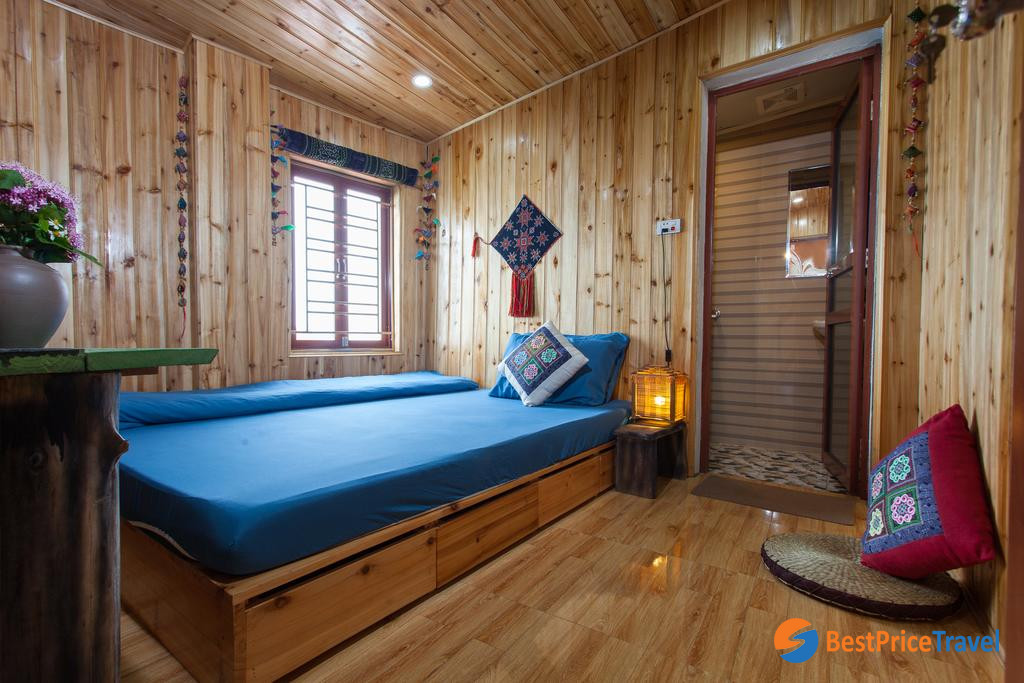
When communicating with the owners, you may be invited to drink water or wine. If you do not want to drink, you should bluntly refuse so that the owners will understand and sympathize. It is prohibited to turn the bowl upside down because only shamans are allowed to do that to dismiss the evil. Besides that, when talking to owners, you also do not point your fingers to the front. H´mong people think that such action means not satisfy and scorn others.
Preparing follows the above guides and notes, it is for sure that you will have a wonderful trip in Sapa, with reasonable prices although this is the first time you do Sapa tours.
You may also like: Top 5 Famous Trekking Routes In Sapa
Thuy Linh
Image sources: Internet

